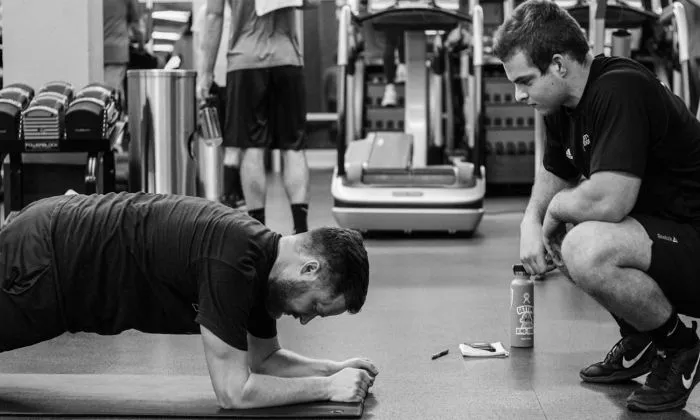Improving your leaping ability requires a combination of strength, power, flexibility, and technique refinement. Whether you’re an athlete aiming to increase your vertical jump for basketball or volleyball, a dancer striving for higher and more graceful leaps, or simply looking to enhance your athleticism and agility, targeted training can help you achieve your goals. In this comprehensive guide, we’ll explore effective strategies and exercises to improve your leaping ability.
1. Strength Training
Lower Body Strength:
Focus on Compound Exercises: Incorporate compound movements like squats, deadlifts, lunges, and step-ups to build lower body strength and power.
Progressive Overload: Gradually increase the weight, reps, or sets of your strength training exercises to continually challenge your muscles and stimulate growth.
Plyometric Training:
Explosive Movements: Plyometric exercises such as box jumps, depth jumps, and jump squats are specifically designed to improve explosive power and enhance leaping ability.
Short, Intense Workouts: Perform plyometric exercises in short, high-intensity sessions to maximize power development and minimize fatigue.
2. Power Development
Jump Training:
Vertical Jump Exercises: Practice vertical jump variations, including countermovement jumps, depth jumps, and single-leg jumps, to improve your ability to explode off the ground.
Horizontal Jump Exercises: Incorporate broad jumps, long jumps, and bounding exercises to develop power and explosiveness in a forward direction.
Resistance Bands:
Band Resistance: Utilize resistance bands to add extra resistance to your jumps, enhancing muscle activation and power output.
Band-Assisted Jumps: Use bands for assistance during jumps to improve explosiveness and increase the height or distance of your leaps.
3. Flexibility and Mobility
Dynamic Stretching:
Pre-Jump Warm-up: Perform dynamic stretches to warm up your muscles and improve mobility before jump training sessions.
Targeted Stretching: Focus on stretching the hip flexors, hamstrings, calves, and quadriceps to increase flexibility and range of motion, facilitating more efficient jumping mechanics.
Foam Rolling:
- Muscle Recovery: Use foam rolling techniques to alleviate muscle tightness and improve tissue quality, which can enhance performance and reduce the risk of injury during jump training.
4. Technique Refinement
Proper Landing Mechanics:
Soft Landings: Practice landing softly with bent knees and hips to absorb impact and reduce stress on the joints.
Neutral Alignment: Maintain proper alignment of the ankles, knees, hips, and shoulders throughout the landing phase to minimize the risk of injury.
Arm Swing:
Utilize Arm Momentum: Coordinate your arm swing with your jump to generate additional momentum and upward force.
Opposite Arm Action: Swing your arms in opposition to your legs, driving them upward as you jump to maximize vertical lift.
5. Specificity and Variation
Sport-Specific Training:
Tailor Workouts to Your Sport: Customize your training program to focus on movements and muscle groups relevant to your sport or activity, whether it’s basketball, volleyball, dance, or gymnastics.
Simulate Game Situations: Incorporate drills and exercises that mimic the demands of your sport, such as jump shots, spike approaches, or choreographed dance sequences.
Variation:
Mix Up Your Training: Include a variety of jump exercises, intensity levels, and training modalities to prevent plateaus and keep your workouts challenging and engaging.
Periodization: Periodize your training program to cycle between phases of strength, power, and skill development, allowing for adequate recovery and adaptation.
6. Rest and Recovery
Adequate Rest:
Prioritize Recovery: Allow sufficient time for rest and recovery between jump training sessions to prevent overuse injuries and optimize performance gains.
Quality Sleep: Aim for 7-9 hours of quality sleep per night to support muscle repair, hormone regulation, and overall recovery.
7. Nutrition and Hydration
Balanced Diet:
Fuel Your Workouts: Maintain a balanced diet rich in lean protein, complex carbohydrates, healthy fats, and micronutrients to support energy levels, muscle repair, and recovery.
Pre- and Post-Workout Nutrition: Consume a combination of carbohydrates and protein before and after jump training sessions to provide fuel for exercise and facilitate muscle recovery.
Hydration:
Stay Hydrated: Drink plenty of water throughout the day to support cellular function, nutrient delivery, and optimal performance during jump training.
Conclusion
Improving your leaping ability requires a comprehensive approach that addresses strength, power, flexibility, technique, and recovery. By incorporating targeted strength training, plyometrics, flexibility exercises, and proper technique refinement into your workout routine, you can enhance your explosive power, vertical lift, and overall leaping ability. Additionally, prioritizing rest, recovery, and nutrition will support your body’s adaptation to training and help maximize performance gains.
Consistency, patience, and dedication are key to seeing progress in your leaping ability over time. Set realistic goals, track your progress, and adjust your training program as needed to continue challenging yourself and pushing your limits. With perseverance and the right training strategies, you can elevate your leaping ability and excel in your chosen sport, activity, or performance discipline.
Related Topics:
What Is the 2-2-2 Method Metabolism?
Is it beneficial to weight loss by eating yogurt everyday?
A Comprehensive Guide to Female Muscle Building and Fat Loss


